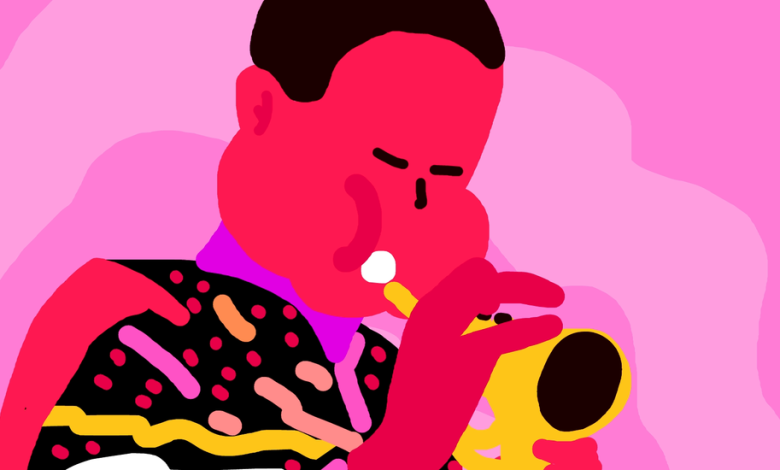5 Minutes That Will Make You Love Don Cherry

Of all the musicians we’ve featured in this series, Don Cherry might be the most adventurous. From his early days in the late 1950s playing with the saxophonist Ornette Coleman to his tinkering with electronic funk and R&B in the ’80s, Cherry proved himself a worthy anarchist, broadening the depth of his art through the wind of his pocket cornet, an instrument he popularized. Though with Cherry, there was a sense that he didn’t want to shift the genre as a whole. Instead, his music felt innocent and voyeuristic, like he colored outside the lines just because.
Cherry grew up in a musical family; his grandmother played piano for silent films, and his mother played piano at home. His father owned a jazz club in Tulsa, Okla., then worked as a bartender at the Plantation Club, a jazz venue in the Watts section of Los Angeles. Cherry met Coleman around the mid-50s and started working with the bandleader; it was a creative partnership that spanned several albums. Coleman’s sound was so jarring that some called it “alien music.” But Cherry identified with Coleman’s atonality and dissonance, even if he himself played tight, expressive notes that didn’t inflict much chaos. When paired with Coleman’s saxophone, the whole thing felt tumultuous. “Some people loved it and some people hated it, didn’t like it, and there would be arguments and fights,” he once told NPR’s Terry Gross, referencing a famed 1959 show at the Five Spot Cafe that drew Leonard Bernstein and Thelonious Monk to the venue.
Though Cherry earned favor as a member of Coleman’s band and a featured player on the albums “Something Else!!!!” and “The Shape of Jazz to Come,” he soon established himself as a formidable bandleader or co-leader. In 1960, he and John Coltrane recorded a number of Coleman’s compositions as a homage to their peer. Six years later, Atlantic Records released this collaborative LP under the title “The Avant-Garde.” As the ’60s became the ’70s, Cherry turned his attention to funk and other cosmic soundscapes, much like other jazz musicians of the time.
In 1975, he released what might be the high-water mark of his solo discography, “Brown Rice,” a slight yet exhilarating blend of Indian raga and African rhythm with subtle electronic flourishes. Cherry spent the ’70s in Sweden with his partner, Moki, where the two would create what they called “organic music” with like-minded local artists. Then, on the 1985 album “Home Boy (Sister Out),” Cherry turned his attention to Paris. A downtown funk record influenced by that city’s sound, it achieved cult status there until the label WeWantSounds released it more widely in 2018.
By the time of Cherry’s death in 1995, he was considered a torchbearer for avant-garde jazz. Here, we spotlight his work with 13 selections that tell the story of his free-spirited brilliance. You can find a playlist at the bottom of the article, and be sure to leave your own favorites in the comments.
◆ ◆ ◆
Joy Guidry, musician
“Hope”
When thinking about Don Cherry’s music, his album “Organic Music Society” is always the first to come to mind. I often come back to this entire album for how it can always slow my breathing and open my soul to the other side. The colors he uses in this album paint a picture of many different forms of praise and worship, especially in the seventh track, “Hope.” There’s so much warmth and comfort throughout this entire song. I always see a ton of deep oranges, purples and yellows when listening to “Hope.” The singing, different percussion instruments, and the rhythm of the piano and flute come together to make an oasis of sounds for dancing, screaming or giving thanks and praise. “Hope” is a song that brings a lot of my deep emotions to the surface, and I come back to it a lot when I need to have a big release or when I’m feeling spiritually blocked up. “Organic Music Society” is one of the best master classes in improvisation I’ve ever run across.




